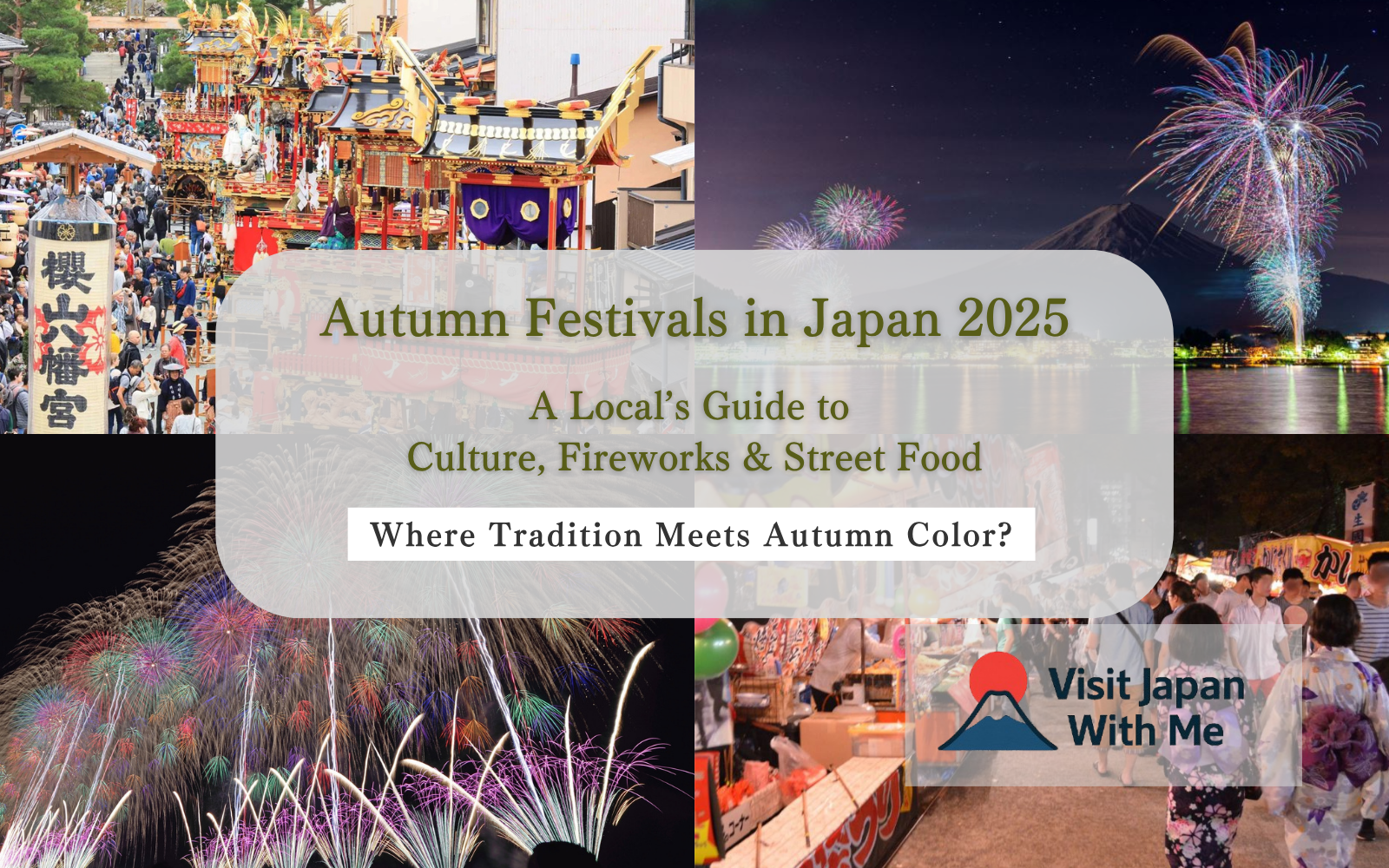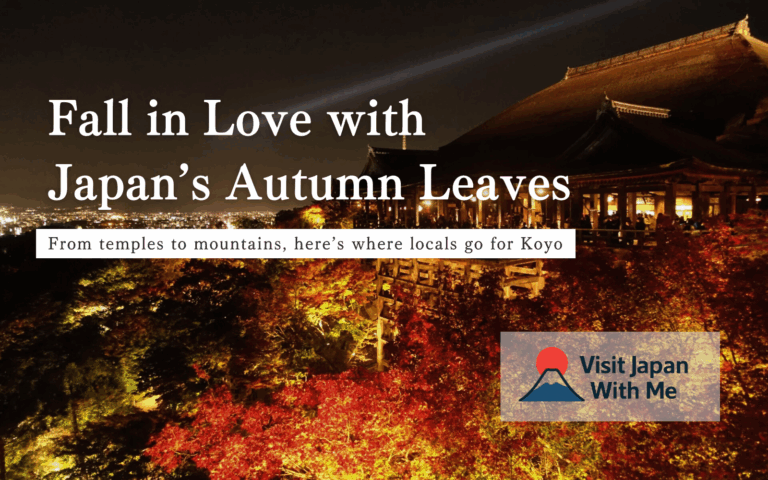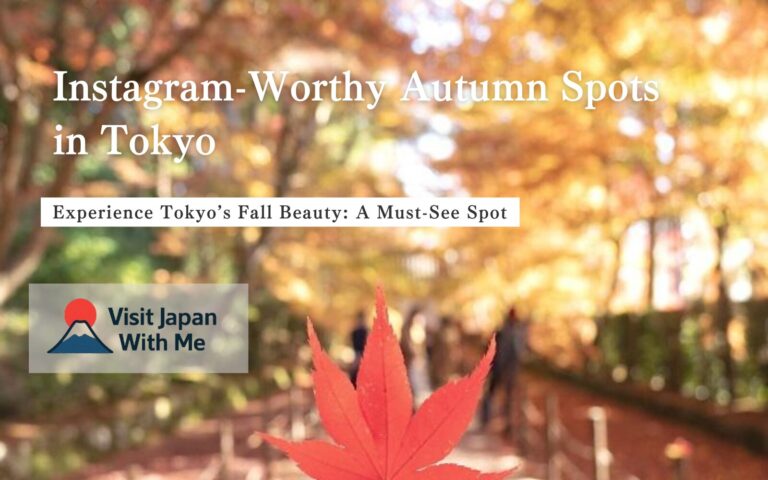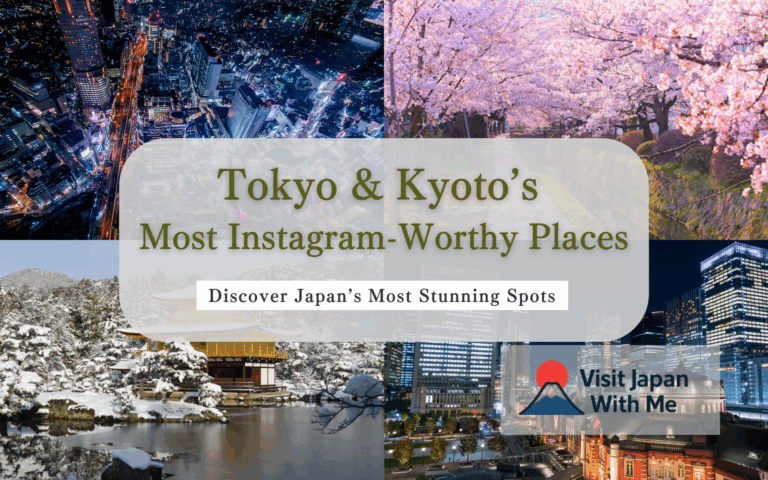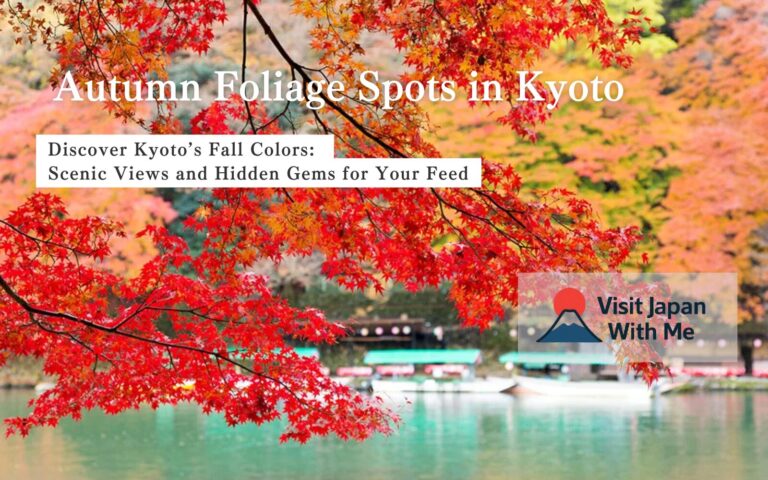Autumn Festivals in Japan 2025: Culture, Fireworks & Food Stalls
Why Autumn Is Festival Season in Japan
When the summer heat fades and the air turns crisp, Japan’s streets and shrines come alive with autumn festivals — matsuri (祭り). The sky is often clear, the humidity is gone, and the colorful autumn leaves create a beautiful backdrop for traditional events.
Autumn festivals often celebrate the harvest, give thanks to the gods, and bring communities together. You’ll see centuries-old traditions like mikoshi (portable shrines) paraded through the streets, taiko drumming, and locals dressed in seasonal attire. For travelers, it’s a perfect way to experience Japan’s community spirit and cultural heritage.
🗾 More Japan travel tips coming soon!
We’re a local team based in Japan, and we’re adding more helpful tips and real insider info soon.
Don’t miss out—bookmark this site and come back for fresh updates!
🔖 Bookmark Now2025 Autumn Festival Calendar
| Festival | Date (2025) | Location | Notes |
|---|---|---|---|
| Takayama Autumn Festival | October 9–10 | Hida, Gifu | UNESCO-recognized, with exquisitely crafted floats illuminated at night. |
| Kawagoe Festival | October 18–19 | Kawagoe, Saitama | Edo-era streets with grand floats and lively festival music. |
| Nada Fighting Festival | October 14–15 | Himeji, Hyogo | Energetic shrine clashes, famous for intensity and traditional spirit. |
Why These Festivals?
You might have heard of Japan’s “Three Great Festivals” — Gion Matsuri in Kyoto, Tenjin Matsuri in Osaka, and Kanda Matsuri in Tokyo. These are spectacular events, but they’re held in summer (or early summer), not autumn.
For this guide, we chose Takayama Autumn Festival, Kawagoe Festival, and Nada Fighting Festival because:
- Perfect autumn timing – All are held in October, matching peak autumn travel season.
- Seasonal scenery – Takayama’s old streets, Kawagoe’s Edo-style townscape, and Himeji’s coastal shrine setting look stunning under crisp autumn skies.
- Unique character – Takayama and Kawagoe showcase ornate floats and elegant parades, while Nada offers an adrenaline-filled spectacle where portable shrines are crashed together.
- Comfortable weather – Unlike midsummer festivals, you can enjoy them without battling extreme heat.
- Travel-friendly – Takayama pairs well with Hida & Shirakawa-go trips; Kawagoe is an easy day trip from Tokyo; Nada is close to Himeji Castle, making it easy to combine sightseeing and festival fun.
Takayama Autumn Festival – 高山秋祭り (October 9–10, 2025)
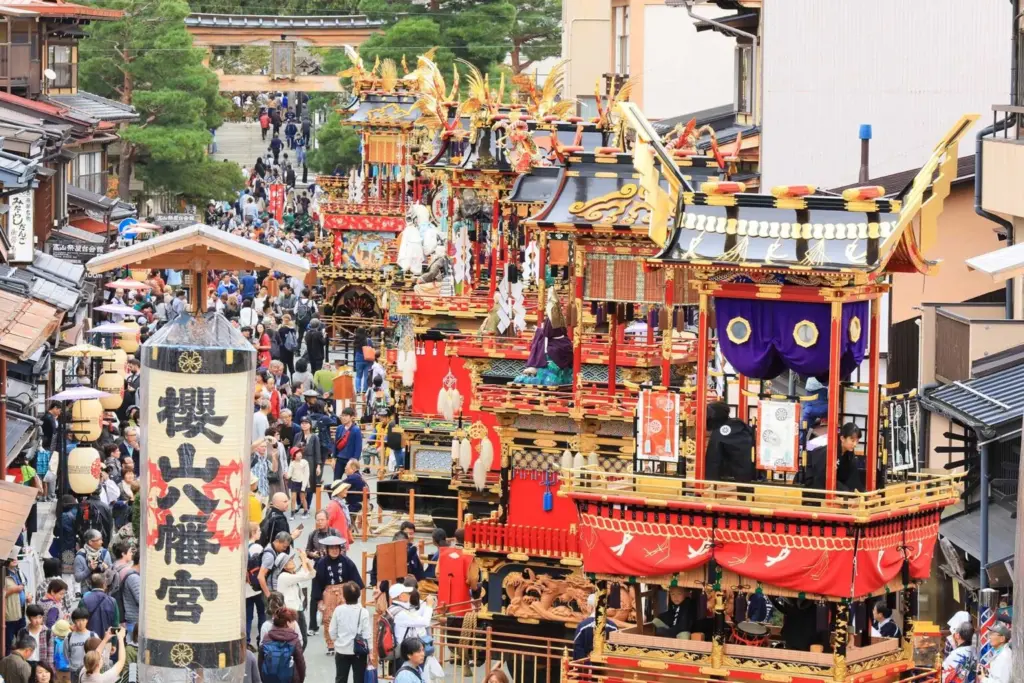
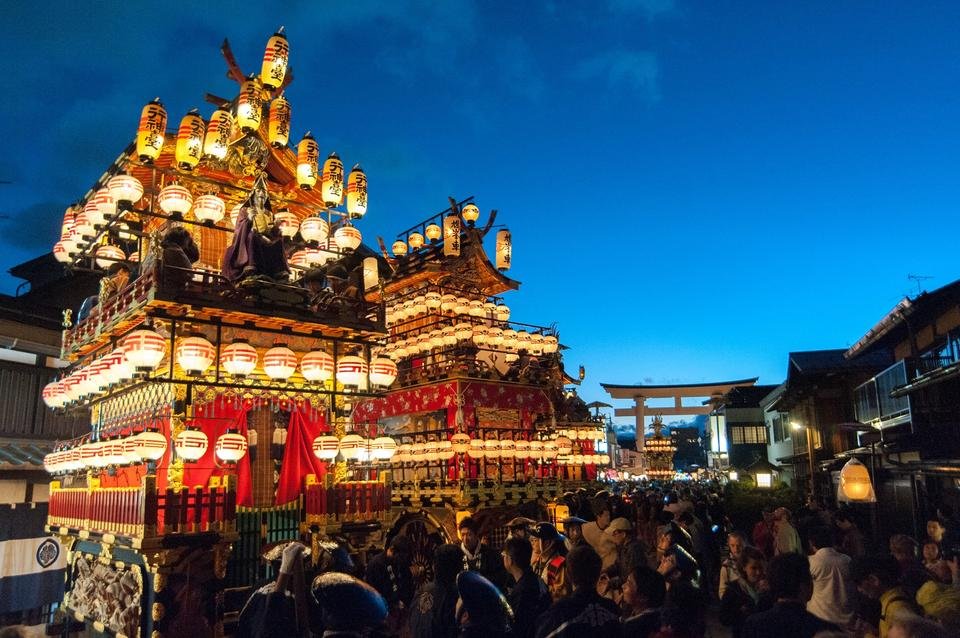
Highlights:
- UNESCO-recognized beauty – Known as one of Japan’s most beautiful festivals.
- Lavish floats (yatai) – Eleven ornate floats, crafted with intricate wood carvings, lacquer work, and gold leaf, parade through the streets.
- Karakuri ningyo performance – Selected floats feature mechanical dolls performing traditional scenes, a skill passed down since the Edo period.
- Nighttime lantern parade – Hundreds of lanterns illuminate the floats, blending beautifully with Takayama’s Edo-period streets.
- Compact viewing area – The parade route is centered around the old town, making it easy to see all the floats on foot.
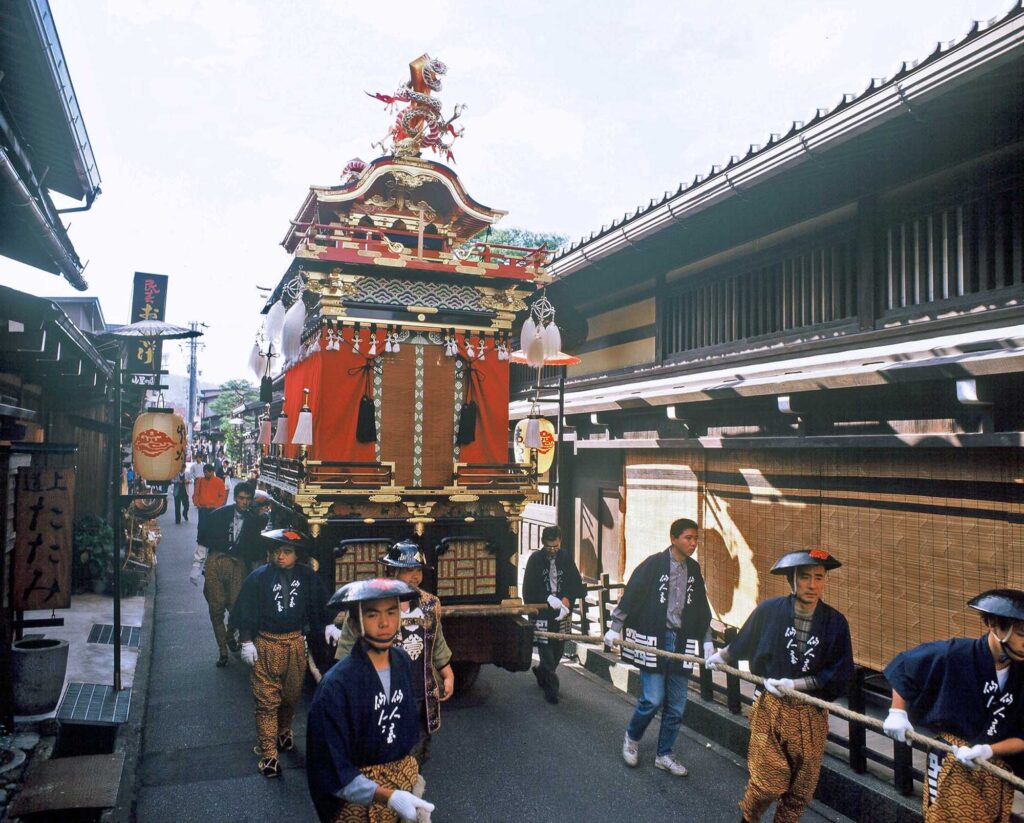
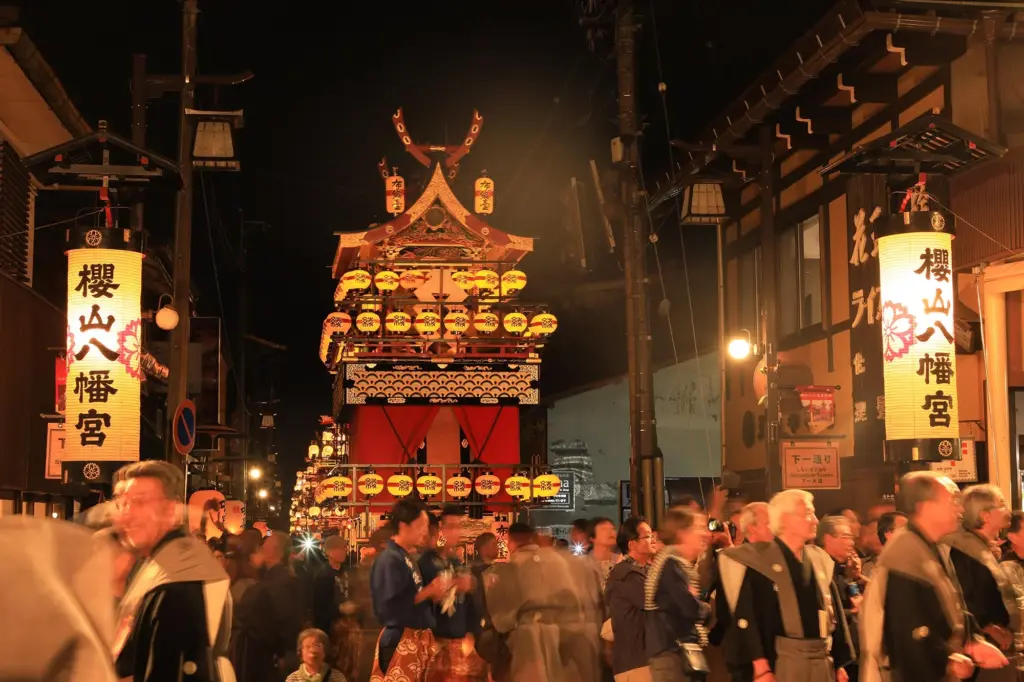
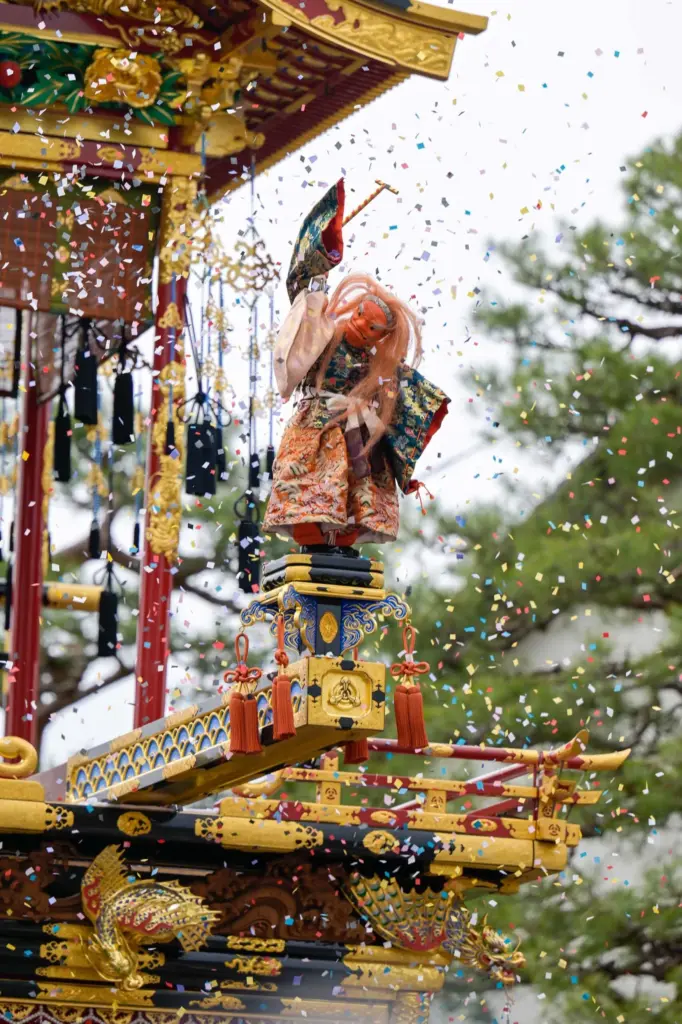
Why it’s special for visitors: Takayama’s preserved streets and skilled craftsmanship make the festival feel like a living museum of Japanese culture. The crisp mountain air and early autumn leaves enhance the experience.
Travel-Friendly points:
- Easy to combine with a side trip to Hida-Furukawa or the UNESCO-listed Shirakawa-go for an extended cultural experience.
- Compact, walkable festival area with plenty of English-friendly ryokan, cafes, and restaurants nearby.
- Both daytime and nighttime events are easily accessible without long transfers.
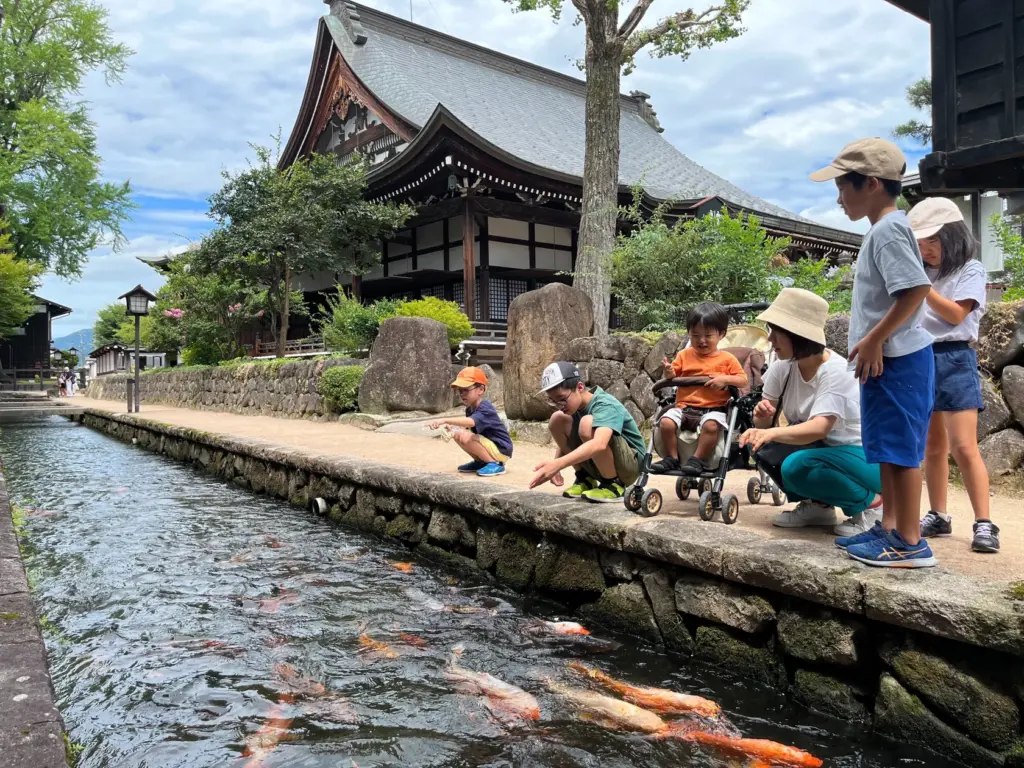
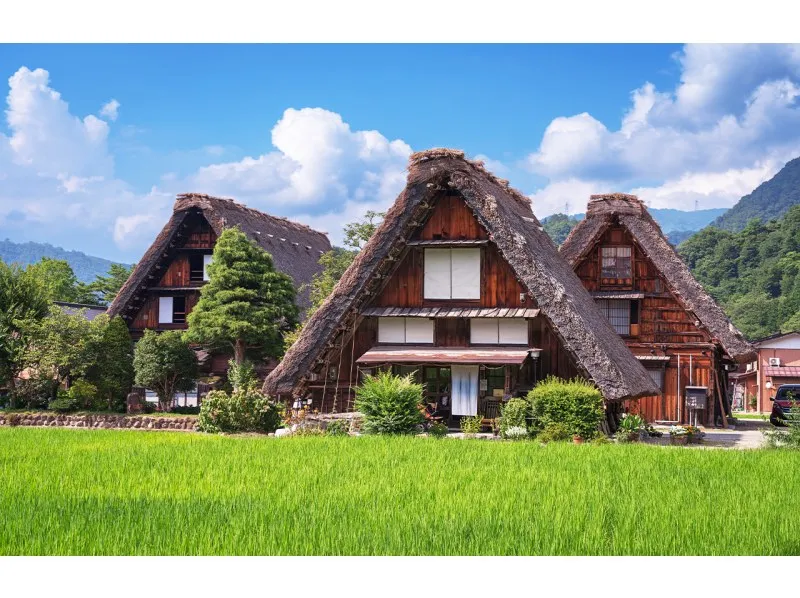
Location: Takayama, Gifu Prefecture
Access: About 2.5 hours from Nagoya by JR Limited Express “Hida.”
Nearest station: JR Takayama Station (15–20 min walk to the main festival area)
Festival area: Around Sakurayama Hachimangu Shrine (桜山八幡宮) and the old town streets
Best time to arrive: Morning of Oct 9 or 10 to see both daytime parades and the evening lantern procession
Tips:
・Many streets are closed to traffic during the festival, so be prepared to walk
・Arrive early if you want a good viewing spot for the yatai hikizoroe (all floats lined up)
・Dress in layers — daytime can be mild, but evenings in the mountains get chilly
Kawagoe Festival – 川越まつり (October 18–19, 2025)
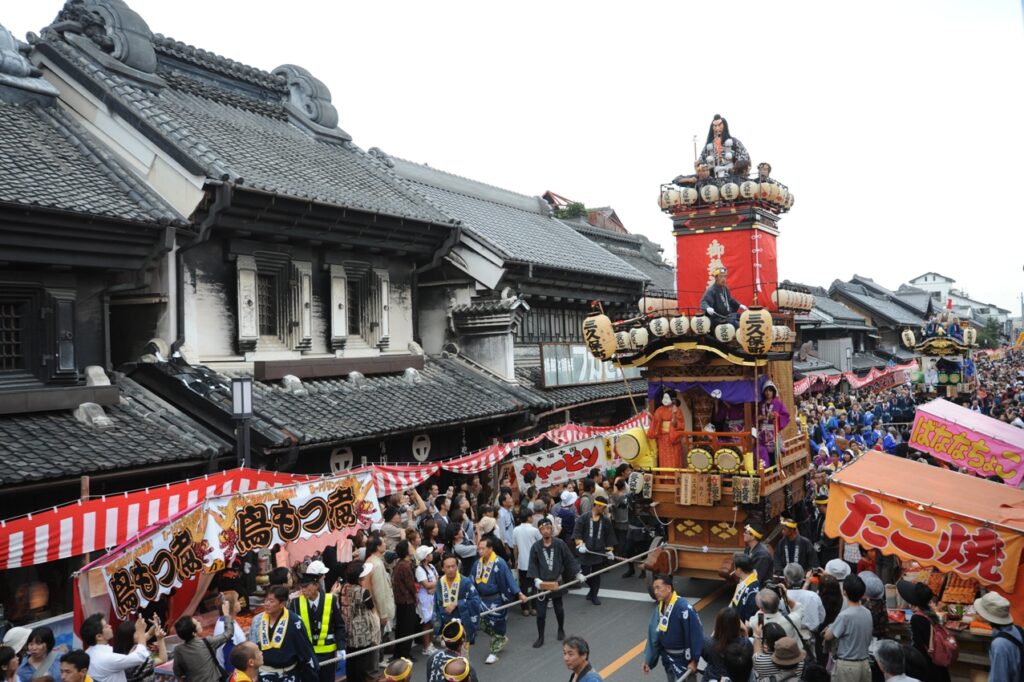
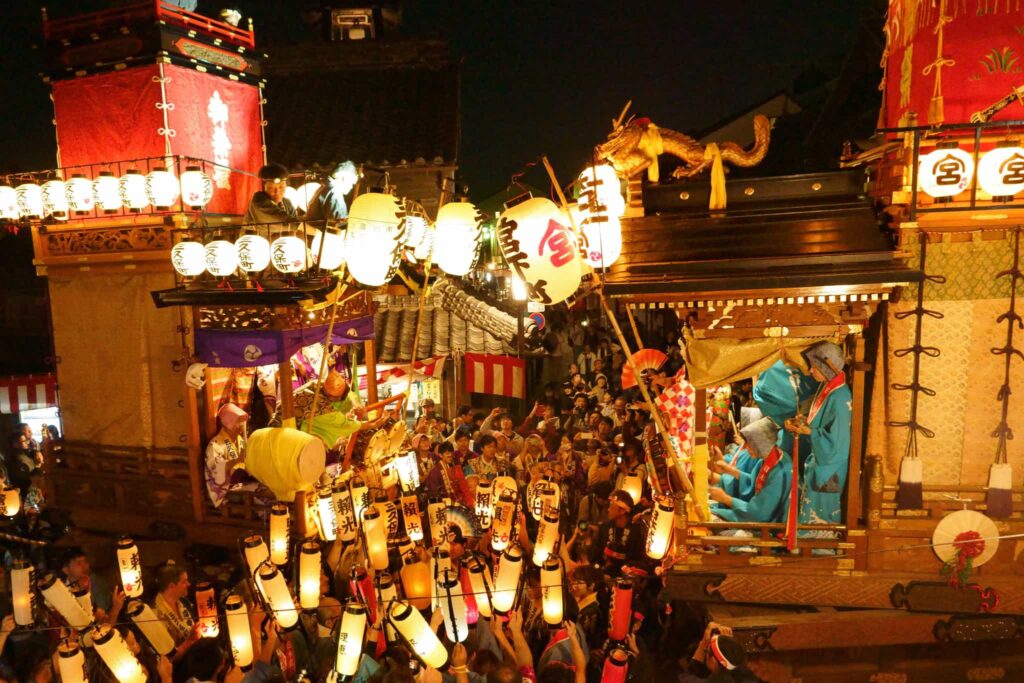
Highlights:
- 370+ years of history – Originating in 1648 when the local lord brought Edo’s festival traditions to Kawagoe.
- UNESCO recognition – Part of the “Yama, Hoko, Yatai” float events inscribed on the UNESCO Intangible Cultural Heritage list in 2005.
- “Little Edo” charm – Floats parade through streets lined with Edo-period warehouse buildings.
- Majestic floats (dashi) – Up to 15 floats adorned with karakuri dolls or figures from Kabuki and Noh, each with unique craftsmanship.
- Hikkawase showdown – The festival’s most exciting moment, when two floats meet and compete in music and dance. Especially at night, the floats face each other under swaying lantern light, and the sound of the ohayashi music fills the streets with a magical atmosphere.
- Day vs. night – By day, admire the intricate details of the floats; by night, enjoy the warm glow of hundreds of lanterns.

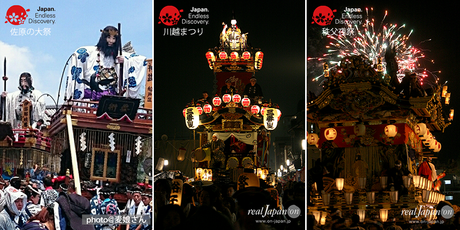
Travel-Friendly points:
- Easy day trip from Tokyo with frequent train connections.
- Clear English signage in tourist areas and stations.
- Coin lockers at stations for luggage storage.
- Compact festival area, allowing visitors to see multiple floats without long walks.
- Kawagoe Hikawa Shrine (famous for matchmaking charms) and Kashiya Yokocho (traditional candy alley) are within walking distance
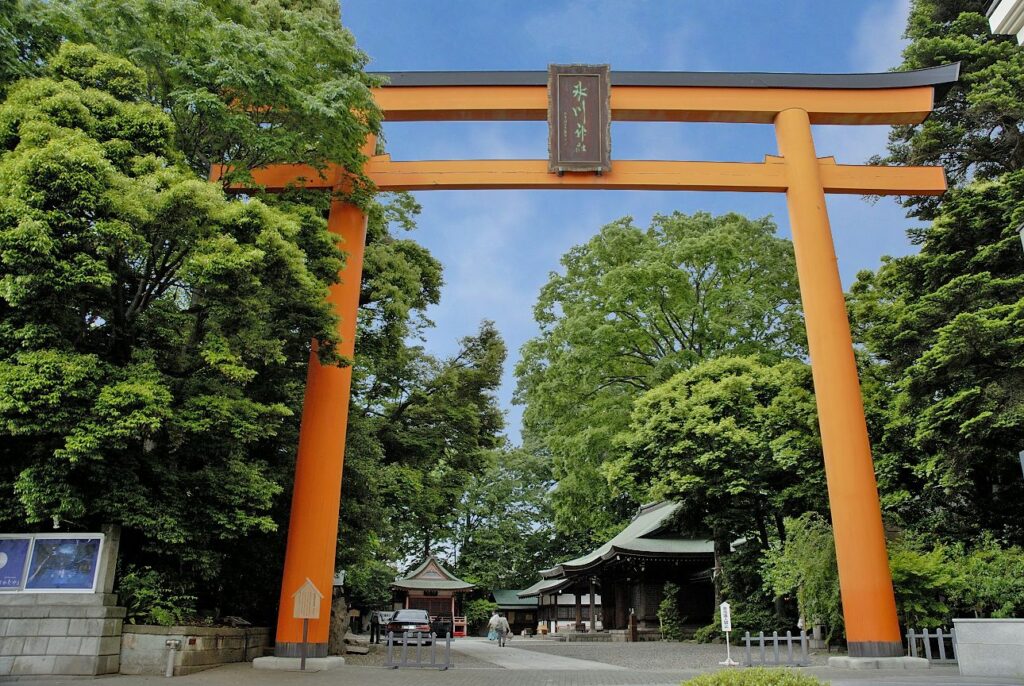
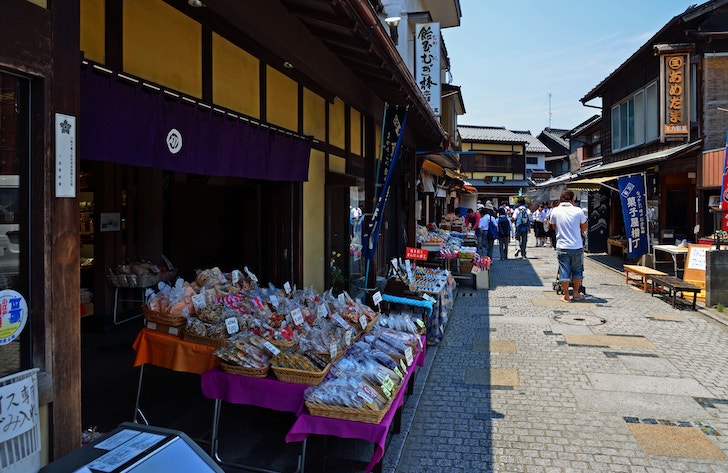
Location: Kawagoe, Saitama Prefecture
Nearest station: Kawagoe Station (JR/Tobu) or Hon-Kawagoe Station (Seibu).
Festival area: Kurazukuri Street and surrounding historic district.
Access: About 30 minutes from Ikebukuro by Tobu Tojo Line, or about 1 hour from Shinjuku by Seibu Shinjuku Line.
Best viewing spots: Sappu no Tsuji intersection, Kurazukuri Street, and near Hon-Kawagoe Station — these areas often host intense hikkawase showdowns.
Best time to arrive: Early afternoon to enjoy sightseeing before the parade, and stay until night for lantern-lit floats.
Nada Fighting Festival – 灘のけんか祭り (October 14–15, 2025)

Highlights:
- Two-day celebration –
- October 14 (Yoi-Miya): No mikoshi fighting on this day. Instead, seven richly adorned yatai floats from each district are paraded to the shrine for purification rituals and festive performances.
- October 15 (Hon-Miya): The main event where three mikoshi (portable shrines), carried by age-based teams, crash together repeatedly in the shrine grounds.
- Age-based teams – Under 25 (red headbands), 26–35 (yellow), 36+ (white).
- Seven district colors – Each neighborhood has a symbolic color for attire and float decoration.
- Sea purification ritual – On Hon-Miya morning, mikoshi bearers enter the sea to purify themselves before the clashes.
- Fierce mikoshi clashes – Dramatic collisions to honor the deities and pray for prosperity.
- Charged atmosphere – Taiko drums, chants, and roaring crowds fill the air.
Why it’s special for visitors: Japan’s most famous “fighting mikoshi” festival, blending Shinto tradition with raw, high-energy performance. It’s loud, intense, and unforgettable — a rare look at unfiltered local spirit.
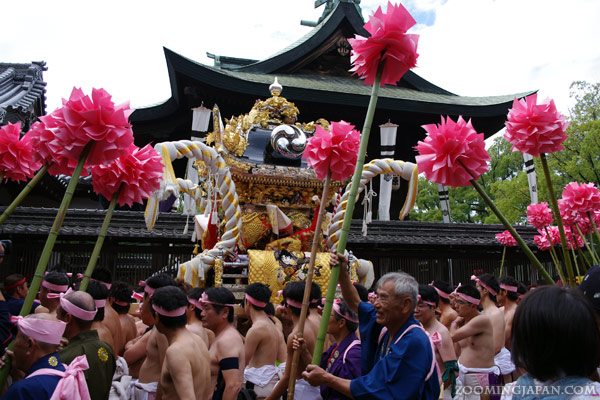

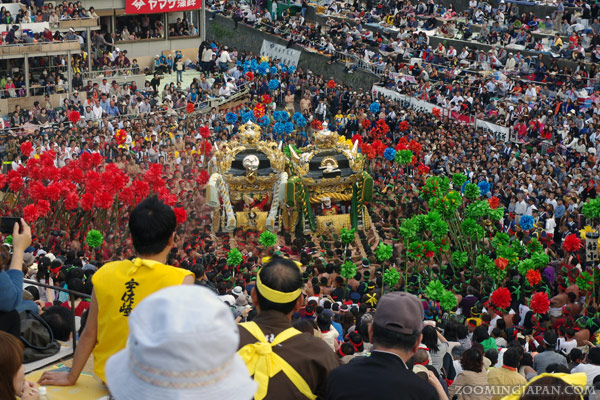
Travel-Friendly points:
- Easy to combine with Himeji Castle in the same day.
- Festival grounds are compact and walkable.
- Shinkansen access from major Kansai and Chugoku cities.
Nearby attractions:
- Koko-en Garden – A beautifully landscaped Japanese garden next to Himeji Castle.
- Engyo-ji Temple (Mount Shosha) – A mountaintop temple complex featured in The Last Samurai.
- Shoshazan Ropeway – Scenic ride up Mount Shosha for panoramic views.
- Himeji City Museum of Art – Exhibitions in a red-brick building near the castle.
- Ieshima Islands – Accessible by ferry from Himeji Port for seafood and sea views.
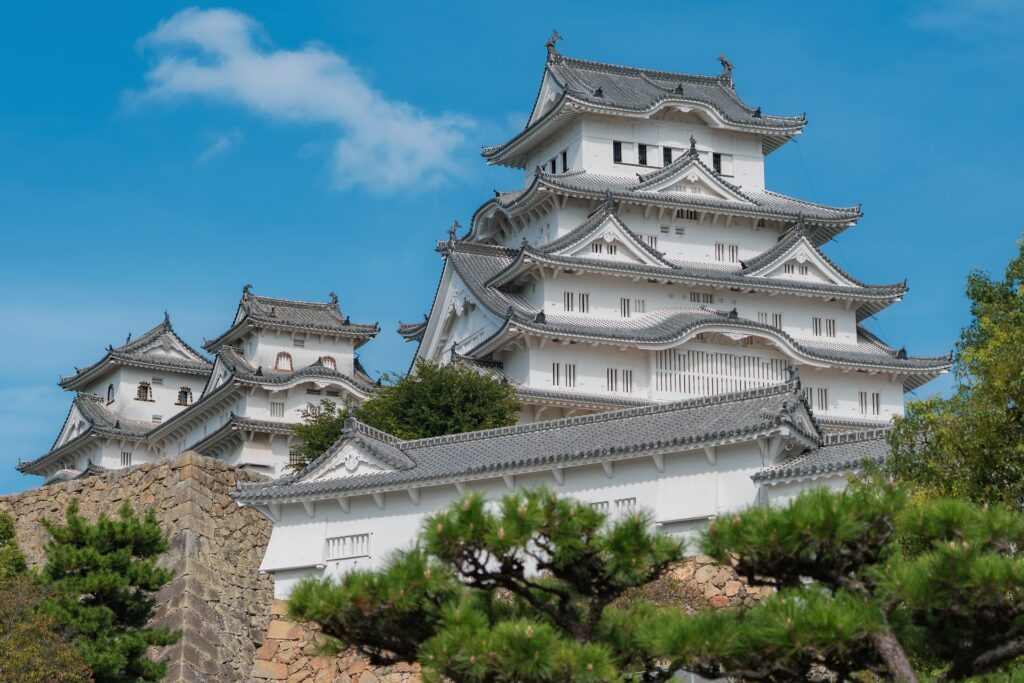
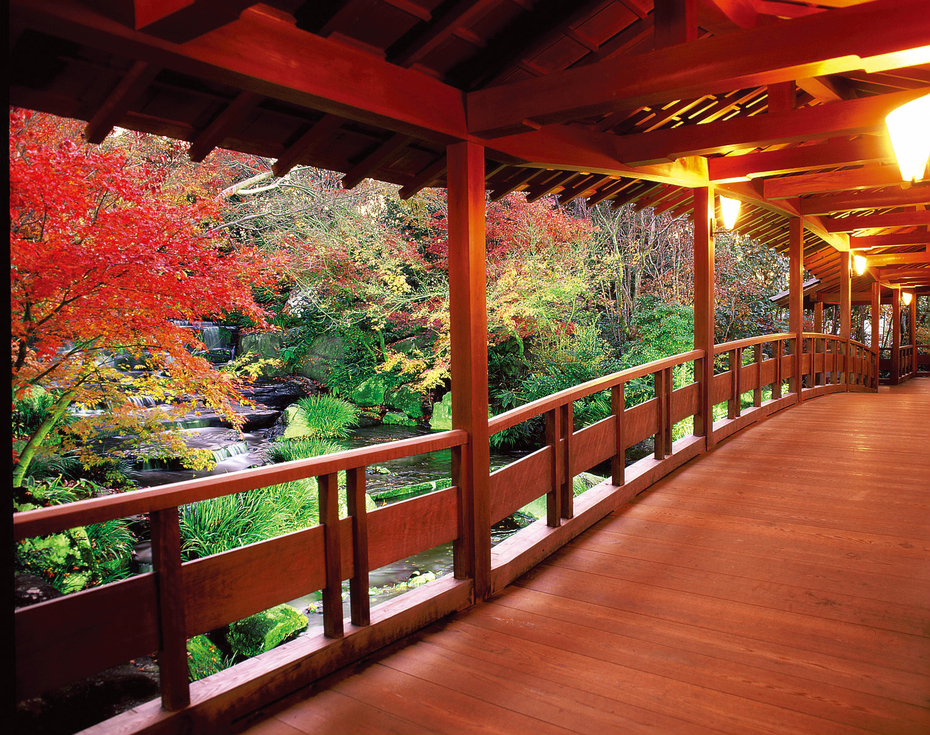
Tips:
- Arrive early on October 14 for the float procession, and on October 15 for a good view of the mikoshi clashes.
- Keep a safe distance — the collisions are intense, and injuries can happen even among participants.
- Wear comfortable shoes, bring layers for October evenings, and pack drinks/snacks for a full day.
- For photography, a zoom lens lets you capture the action from a safe distance.
Location: Matsubara Hachiman Shrine, Shirahama Town, Himeji, Hyogo Prefecture
Nearest station: Shirahama-no-miya Station (Sanyo Electric Railway) – 5 min walk to the shrine.
Access: Himeji is a Shinkansen stop — 40 min from Osaka, 1 hr from Kyoto, 1.5 hrs from Hiroshima; from Himeji Station, take the Sanyo Line to Shirahama-no-miya.
Best viewing areas: Around the Matsubara Hachiman Shrine grounds and main approach road, where mikoshi clashes are most frequent.
Best time to arrive: Morning of October 15 for the sea purification and early clashes, or mid-morning October 14 for the float procession.
Why These Festivals Are Worth Attending for Visitors from Abroad
From a traveler’s perspective, these festivals offer:
- Immersive cultural experience – You’re not just watching; you’re walking among locals, hearing taiko drums echo, smelling grilled yakitori, and feeling part of the community.
- Visual spectacle – Ornate floats (yatai or dashi) with lanterns, traditional costumes, and autumn leaves make for unforgettable photos. Nada’s shrine battles add pure excitement.
- Crowds & scale – These are large-scale events that draw big crowds, especially on the main days. Streets can be very busy, but compared to the most packed summer festivals in Tokyo or Osaka, you may still find breathing space in less central areas.
- Local character – Despite their size, strong participation from neighborhood associations and local musicians keeps the community spirit alive. You’ll feel both the excitement of a major celebration and the warmth of local involvement.
- Easy access for travelers – All locations are reachable by JR or short trips, with plenty of English-friendly facilities nearby.
Fireworks in Autumn? Yes!
Many travelers associate fireworks (hanabi) with summer, but in Japan, you can also enjoy them in autumn — with cooler air, clearer skies, and often smaller crowds.
Nagaoka Autumn Fireworks – 長岡秋花火 (August 2–3, 2025)
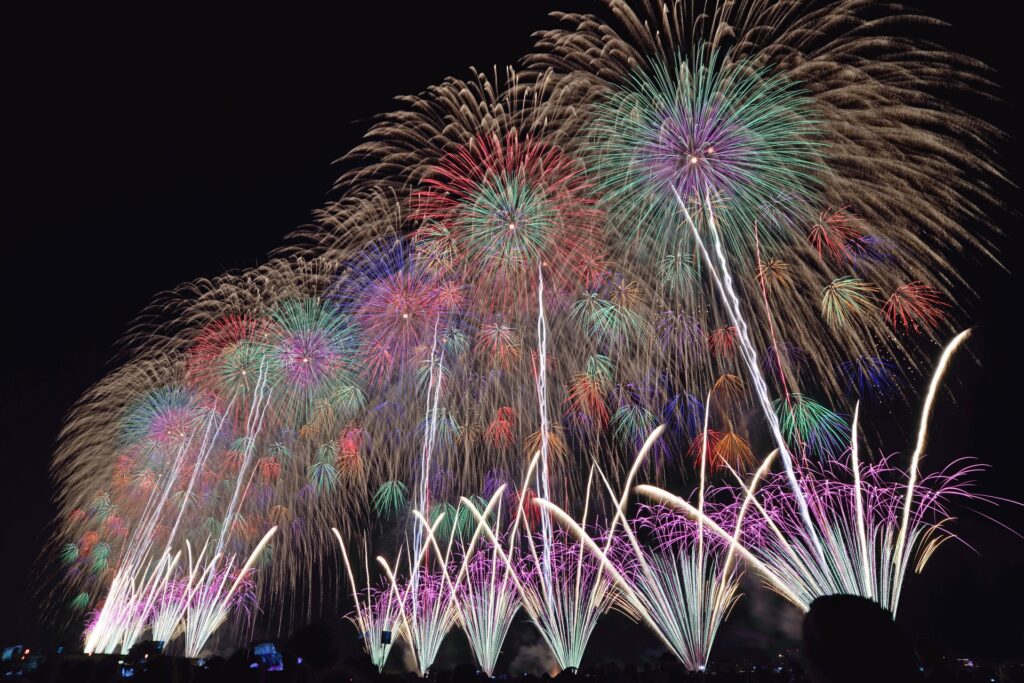
Highlights:
- A condensed masterpiece – A shorter but equally breathtaking version of the famous summer Nagaoka Fireworks, one of Japan’s top three fireworks festivals.
- Signature fireworks – Includes the “Phoenix” display, symbolizing recovery and hope, stretching across 2 kilometers of sky.
- Reflections on the river – The wide Shinano River creates a natural mirror, doubling the impact of each burst.
- Summer-to-autumn bridge – Held in early August, when evenings are cooler but still warm enough to enjoy outdoors.
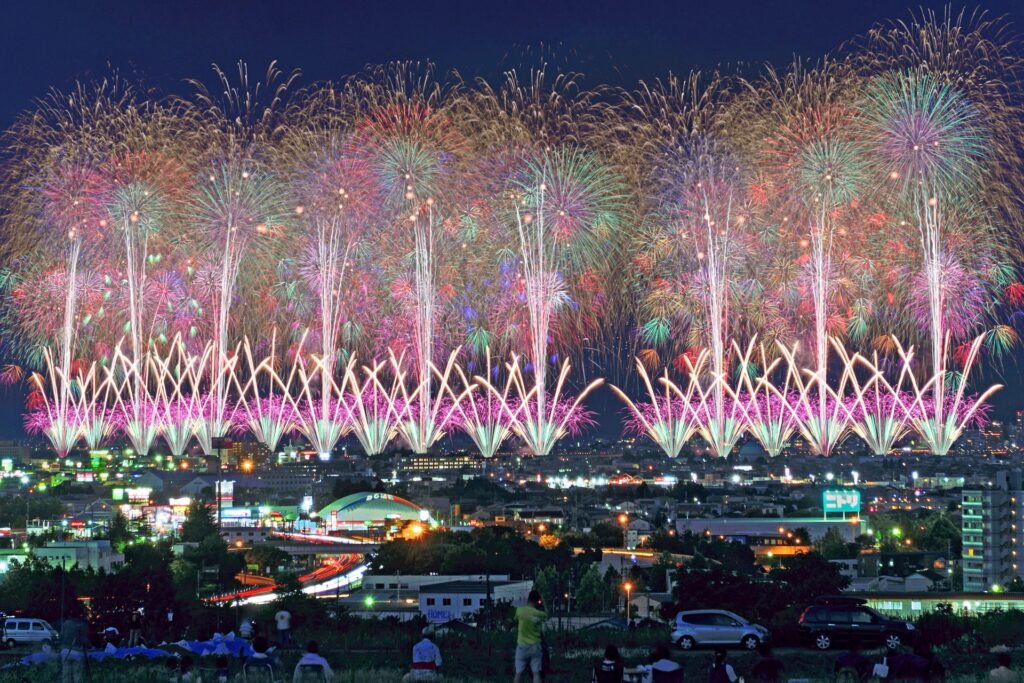
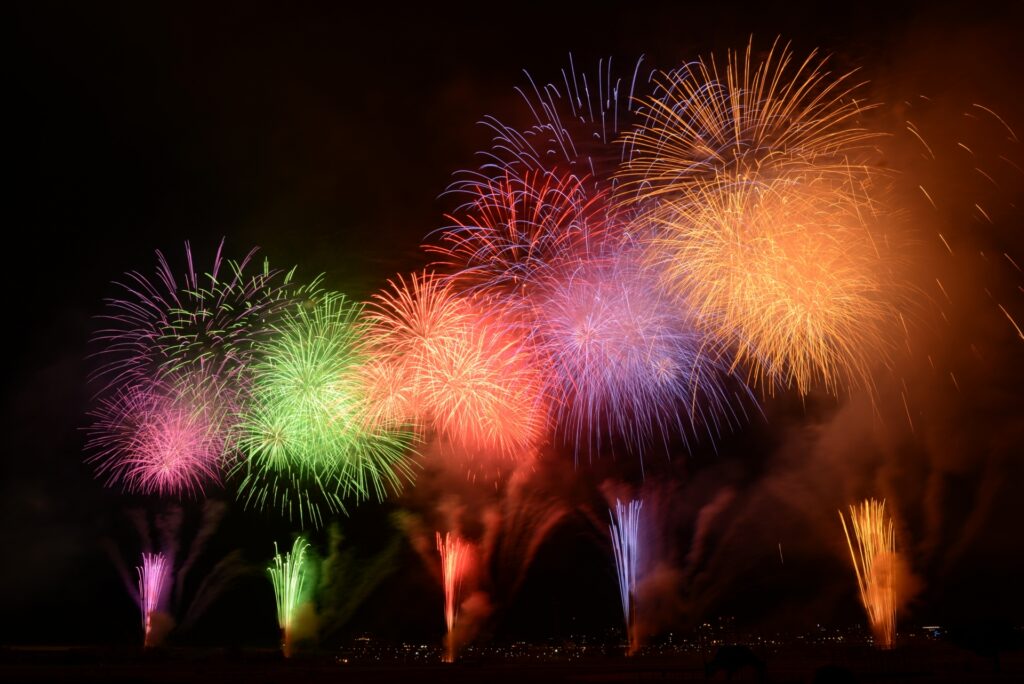
Travel-Friendly points:
- Easy access via Shinkansen from Tokyo, Niigata, or Nagano.
- Reserved seating tickets available, ensuring a good view without fighting for space.
- Plenty of English-friendly hotels near Nagaoka Station, though booking early is essential.
Ticket Prices:
- Premium chair seat (riverbed pipe chairs, international visitors only): ¥15,000
- Premium bench seat (embankment, board-paved): ¥12,000
- Premium block seating (embankment block): ¥9,000
All of these include exclusive perks like an organic cotton sacoche and a rotating COB light.
Ticket Notes:
- All viewing areas are paid-only; there are no free spots.
- Tickets for international visitors are distributed via lottery and must be picked up in person at the venue with passport ID verification.
- Tours offered by companies like JTB or Club Tourism often bundle guaranteed premium seats with transport — a stress-free option for overseas visitors.
Nearby sightseeing to combine with the fireworks:
- Northern Culture Museum – Former residence of a wealthy farming family with beautiful gardens (about 1 hour by car).
- Yuzawa Onsen – Relax in hot springs just 40 minutes away by Shinkansen.
- Yamamoto Isoroku Memorial Hall – Learn about the life of Admiral Yamamoto, a key historical figure from Nagaoka.
- Echigo Hillside National Government Park – Seasonal flower displays and scenic walking trails.
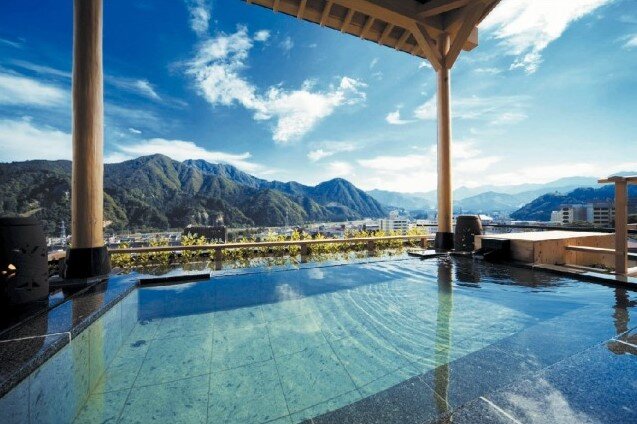
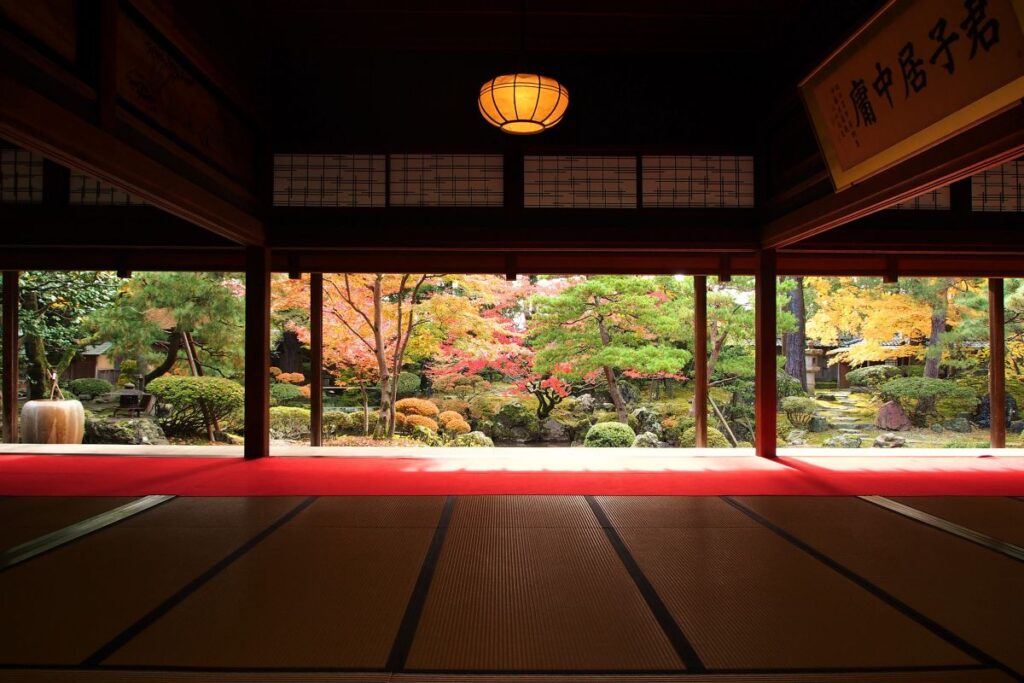
Tips:
- Arrive early in the afternoon to secure a good spot or pick up reserved tickets.
- Bring a light jacket — river breezes can be cool after sunset.
- Avoid driving into the city during the event; public transport is the best option.
Location: Nagaoka City, Niigata Prefecture
Nearest station: Nagaoka Station (Joetsu Shinkansen) – about 20 minutes on foot to the main viewing areas along the Shinano River.
Access: Around 2 hours from Tokyo by Joetsu Shinkansen. On event days, expect heavy foot traffic from the station to the riverbanks — allow at least 40 minutes. No free viewing areas are available; all spots require tickets, which sell out quickly. The main viewing zones are the Kawanishi (west) side and the Chosei Bridge area.
Ticket info: Reserved seats range from around ¥9,000–¥15,000, including premium chair and bench seating with event souvenirs. Tickets for overseas visitors are sold via lottery and must be collected in person with passport ID.
Lake Kawaguchi Autumn Fireworks – 河口湖秋花火 (October–November 2025, dates vary)
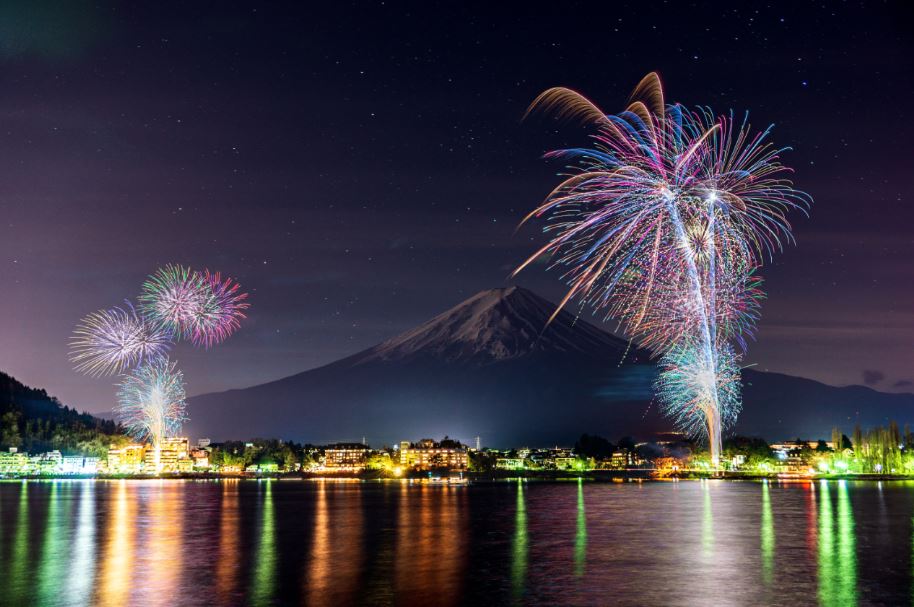
Highlights:
- Mt. Fuji backdrop – Fireworks explode above the lake with Japan’s most iconic mountain in the background, creating postcard-perfect scenery.
- Reflections on water – Calm autumn nights often give crystal-clear reflections of both the fireworks and Mt. Fuji.
- Seasonal atmosphere – Cooler air and nearby autumn foliage make the event especially photogenic.
- Multiple viewing spots – The northern shore offers the best full view of Mt. Fuji and fireworks together.
Travel-Friendly points:
- Kawaguchiko is a popular tourist base with many English-friendly hotels and guesthouses.
- Easy to combine with daytime visits to the Fuji Five Lakes area, Chureito Pagoda, or local onsen.
- Less crowded than summer events, though weekends can still be busy.
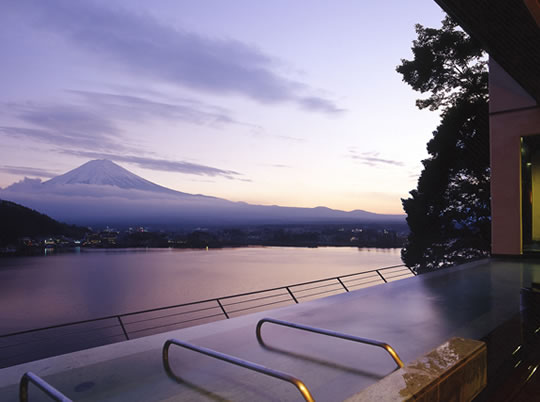
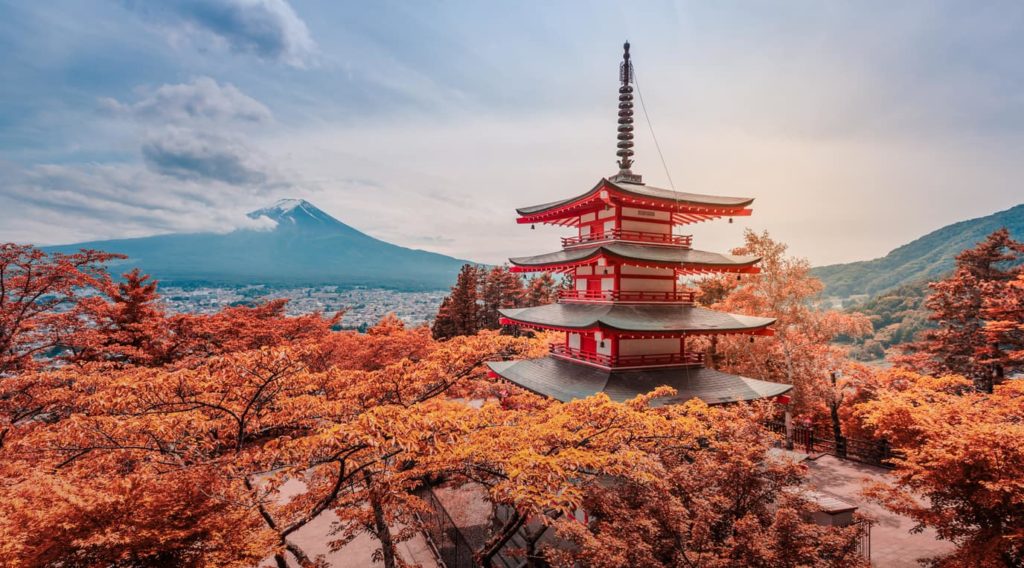
About the Fuji Five Lakes:
The Fuji Five Lakes are located at the northern foot of Mt. Fuji, each offering its own scenic charm. The most visited for tourism are Lake Kawaguchi and Lake Yamanaka, but the quieter Lake Shoji, Lake Saiko, and Lake Motosu are also worth exploring.
- Lake Kawaguchi (河口湖) – Best for views of Mt. Fuji with easy access to hotels, cafes, and sightseeing boats.
- Lake Yamanaka (山中湖) – Known for its resident swans and relaxing sightseeing cruises.
- Lake Shoji (精進湖) – Offers one of the most symmetrical views of Mt. Fuji, famously depicted on the Japanese ¥1,000 bill.
- Lake Saiko (西湖) – Surrounded by nature trails and less developed, ideal for a peaceful retreat.
- Lake Motosu (本栖湖) – Deepest and clearest of the five, popular with campers and water sports.
Getting around:
A local loop bus service connects the Fuji Five Lakes, making it easy to visit multiple spots in a single day without a car.
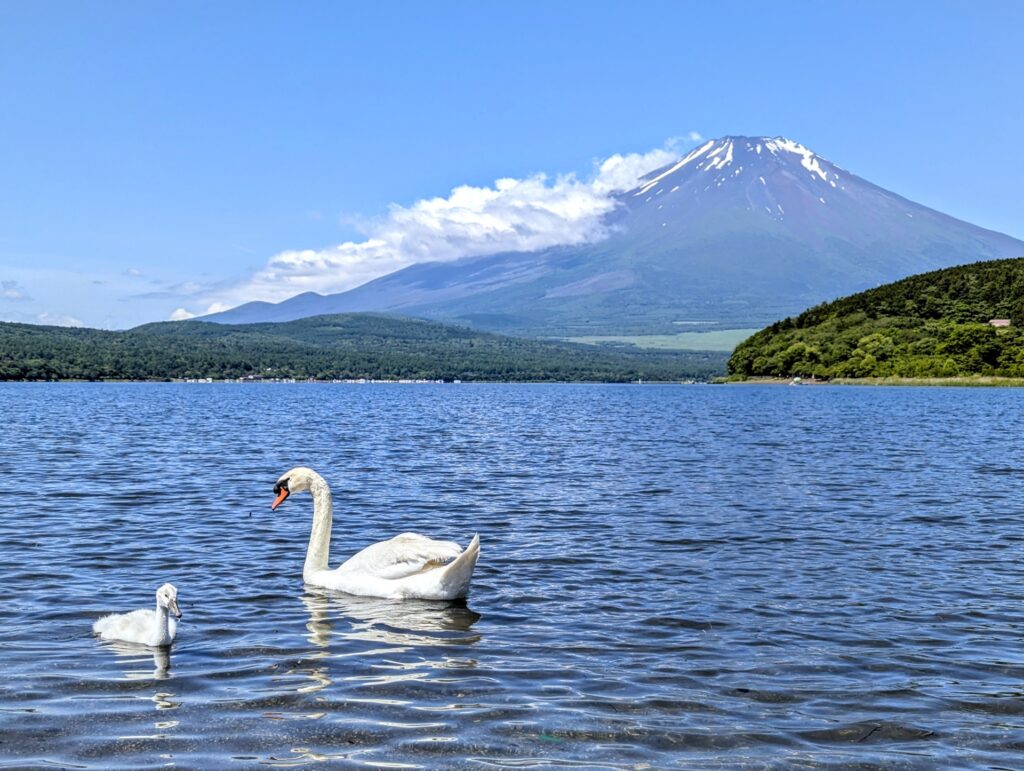
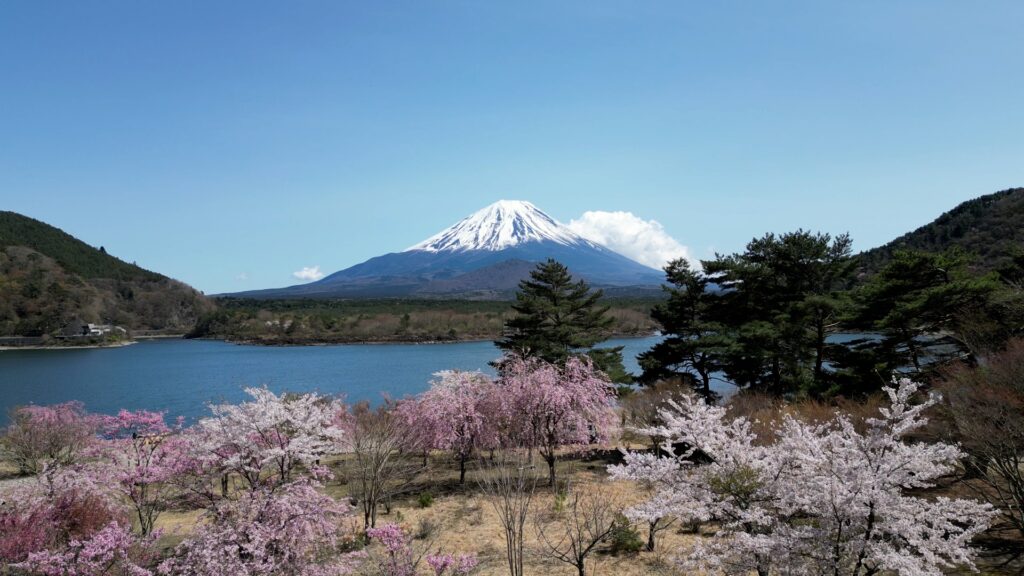
Tips:
- Check dates in advance — autumn fireworks here are held on select nights, not every evening.
- Bring warm clothing; evenings can be chilly in October–November.
- Arrive before sunset to capture twilight shots of Mt. Fuji before the fireworks begin.
Location: Lake Kawaguchi, Fujikawaguchiko Town, Yamanashi Prefecture
Nearest station: Kawaguchiko Station (Fujikyuko Line) – most lakeside viewing areas are a short walk or bus ride away.
Access: About 2 hours from Tokyo by express bus or train. The northern shore offers the best combined view of Mt. Fuji and the fireworks. Arrive at least 1–2 hours before the show to secure a good spot, especially on weekends.
Ticket info: There are no paid seating areas — all viewing spots are free and open to the public.
Food To Try At Festivals
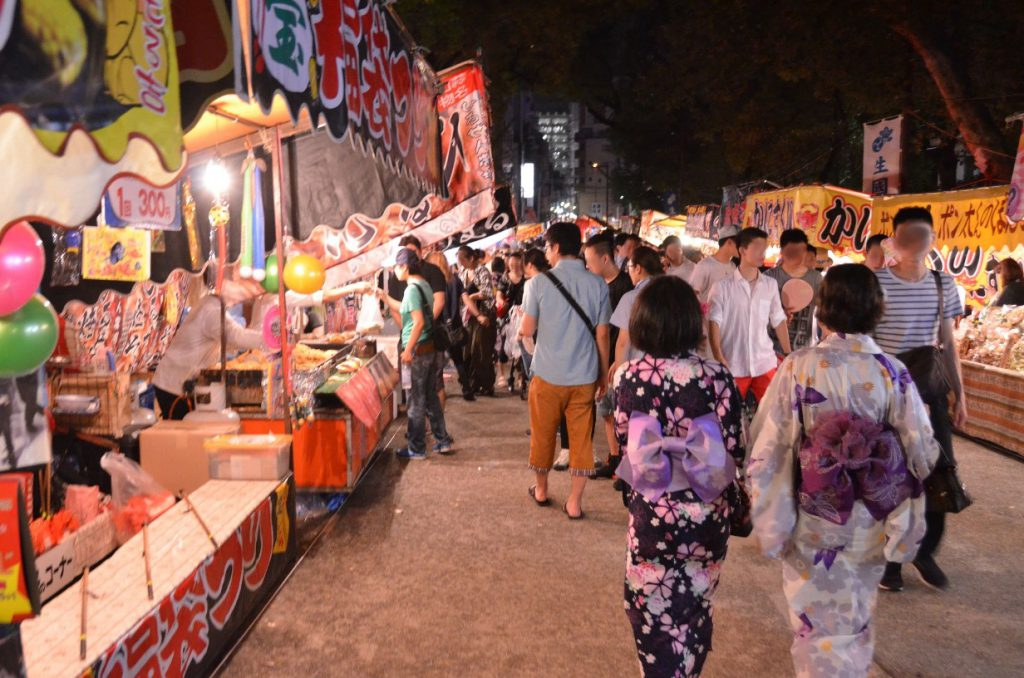
One of the joys of any matsuri is not only the main parade or performance, but also the lively rows of yatai (food stalls) and game booths lining the streets. Festivals are a treat for all ages — especially children, who can enjoy colorful game stalls like goldfish scooping (kingyo sukui), ring toss (wanage), or prize lotteries (kuji-biki). The mix of delicious smells, bright lights, and cheerful calls from vendors creates a uniquely festive atmosphere.
- Yakitori – Grilled chicken skewers, smoky and savory.
- Takoyaki – Round, fluffy octopus-filled balls topped with savory sauce and bonito flakes.
- Amazake – A warm, sweet, non-alcoholic rice drink, perfect for chilly evenings.
- Yaki-imo – Roasted sweet potatoes, a nostalgic autumn snack in Japan.
💡 Tip: Bring some small coins (¥100 and ¥500) for easy payment at stalls — it’s faster, and some game booths only take coins.
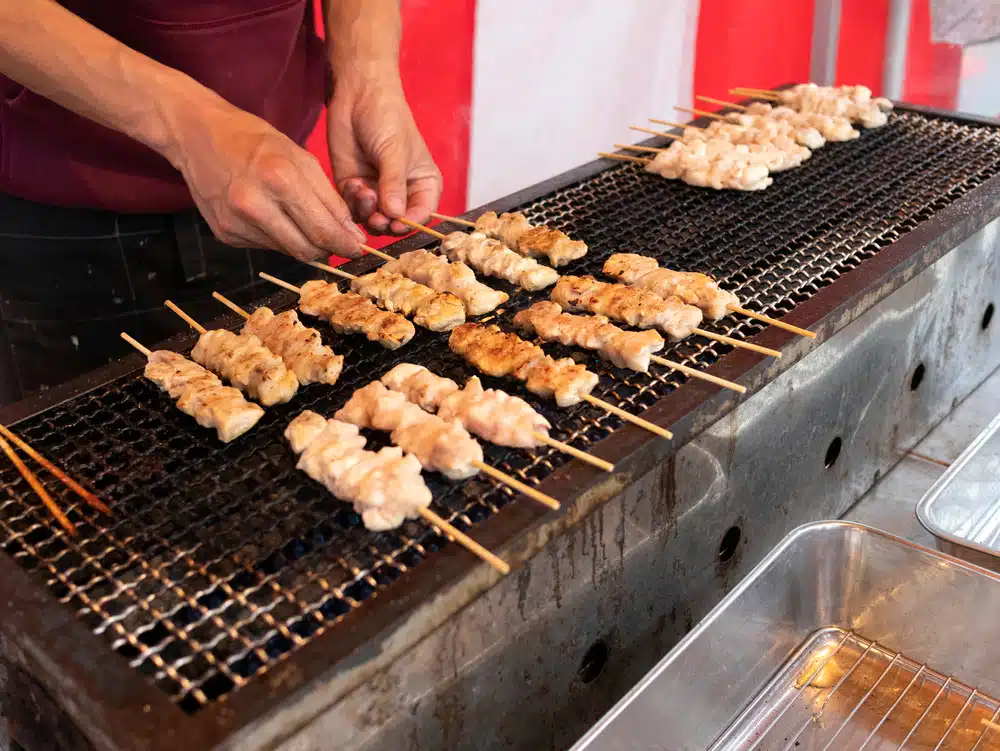


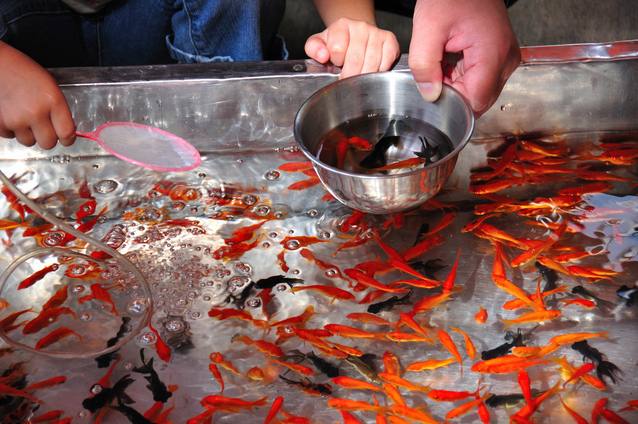
What to Wear: Light Jacket + Optional Yukata
October and November evenings can get chilly, especially in the countryside. A light jacket or cardigan is recommended.
Some festivals rent or offer yukata (light cotton kimono) for visitors — if you want to blend in with the locals, it’s a fun option. For those new to Japan, here’s the simple difference:
- Yukata – A casual, lightweight cotton robe, usually worn in summer or at festivals. It’s easy to wear, machine-washable, and relatively inexpensive, so you don’t have to worry much about stains or dirt.
- Kimono – A more formal, multi-layered garment, often made from silk and worn for ceremonies like weddings or tea gatherings. Kimono are expensive, delicate, and not easily washable, so people avoid wearing them in crowded or outdoor festival settings.
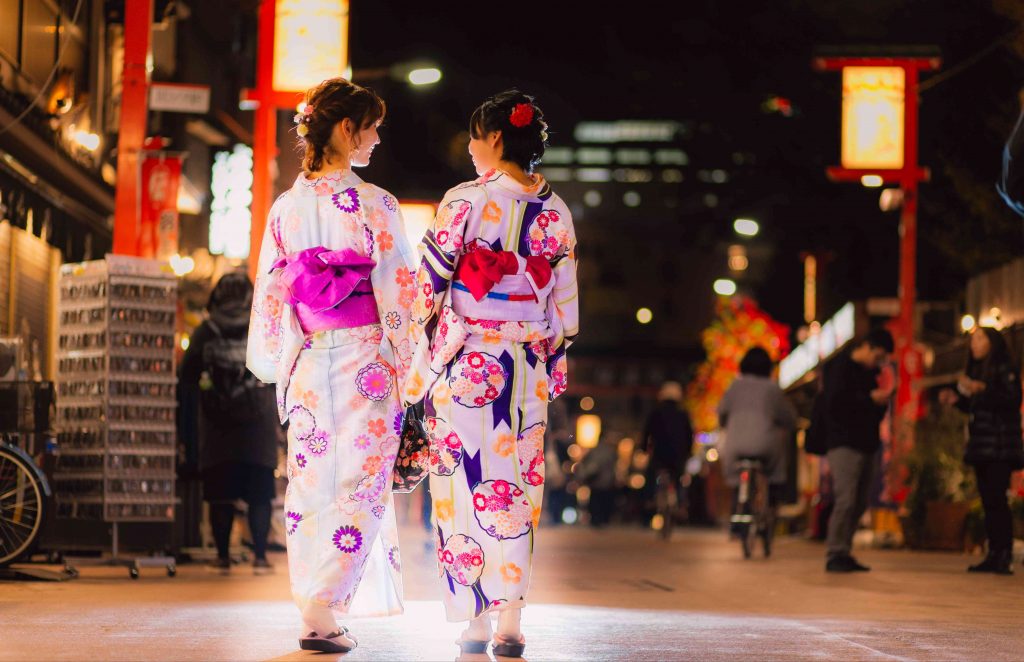
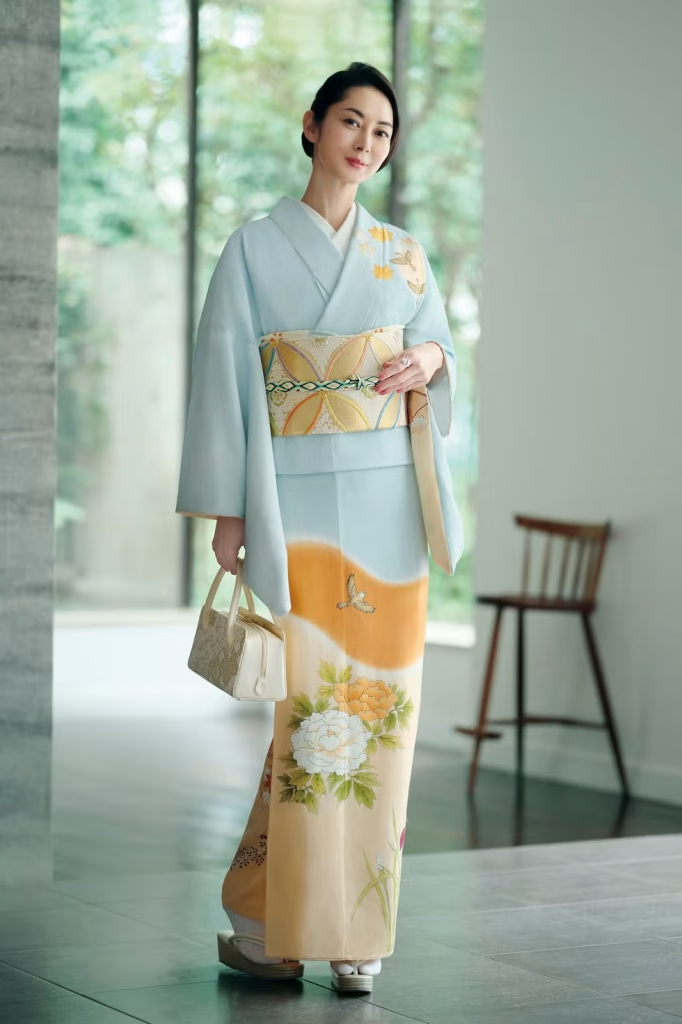
At festivals, people almost always wear yukata, not kimono, because it’s lighter, cooler, easier to move in, and less risky to damage. In autumn, however, you’ll see fewer yukata and more casual outfits with a seasonal twist, like scarves or autumn-colored jackets — but wearing yukata is still perfectly acceptable if you want the full festival experience.
🍁 Autumn in Japan isn’t just about the red maple leaves — it’s about community, tradition, and the joy of the season. Whether you join a grand parade in Takayama, enjoy Edo charm in Kawagoe, or feel the adrenaline of Nada’s shrine battles, you’ll experience omotenashi (Japanese hospitality) at its most vibrant.
Let’s explore Japan together this autumn.

